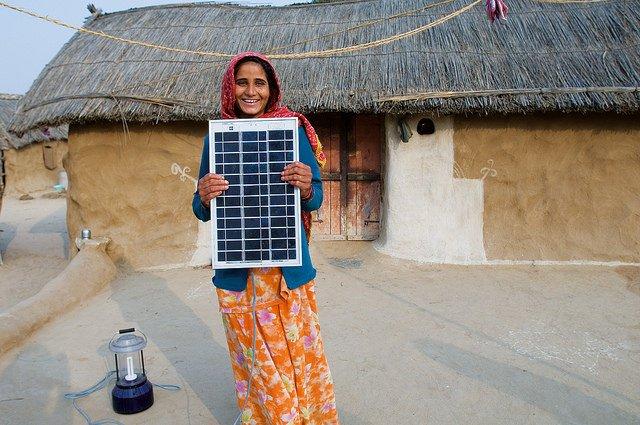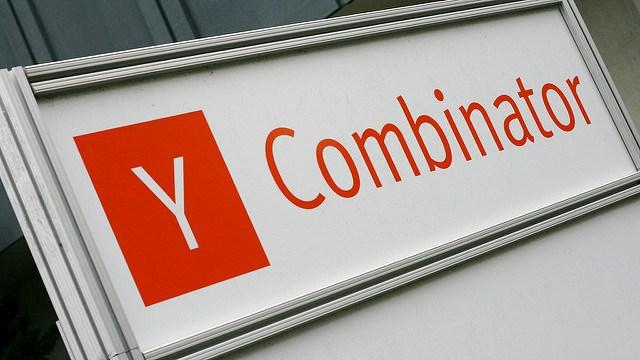Door-to-Door Contraception Sales in Pakistan Offer Awareness, Economic Freedom for Women


Plenty of data exist that show a strong correlation between the use of contraception and women’s improved health and economic opportunities. Nevertheless, despite a concerted effort to improve access in Pakistan, which has resulted in a lower birthrate, contraception is still a tough sell in much of the country.
Rural women in Pakistan are using contraception at a far lower rate than their counterparts in rural areas. The lack of access to contraception, and knowledge about reproductive health, together contributes to Pakistani women suffering from one of the world’s highest maternal mortality rates in the world. Depending on the source, Pakistan, while making some improvements over the past 50 years, still has a high birthrate, one approximately 50 percent higher than that of India’s. Poverty, obstinate religious hostility, and a dearth of information contribute to the difficulty many poor and rural women have when it comes to securing contraception.
In rural areas, however, door-to-door sales of contraception are one tactic helping to strengthen women’s reproductive rights in Pakistan. MARVI (Marginalized Area Reproductive Health Viable Initiative), one of many programs run by the NGO HANDS Pakistan, recruits women to work in remote rural areas where there is little or no access to public health care. Health workers that sign on with MARVI learn about the pros and cons of various contraceptives, are trained on how to address objections to birth control, and are then assigned to cover an area with an approximate population of 1,000 people. Think of these women as Pakistan’s version of Avon cosmetics or Hoover vacuum cleaner saleswomen driving the country’s quest to expand access to birth control.
MARVI’s sales and outreach model is based on Pakistan’s Lady Health Worker (LHW) program, which the government launched in 1994 in order to provide primary health care services in areas such as urban slums and rural districts. Such a program became crucial as doctors, and the means to fund them and staff clinics, were lacking. While the World Health Organization has lauded LHWs for improving health indicators in the areas in which they work, many Pakistanis have not been touched by the program because of funding and recruitment challenges. MARVI is one way to fill that gap and provide a necessary service, offered by someone in the community that women can trust. Women who have access to birth control can then be more productive as they help their family manage their farm or business, because a doctor’s visit can result in at a minimum a lost day of work.
Besides contraception, the women who work for MARVI provide additional health services and counseling. They offer antenatal and postnatal care for women; help treat ailments such as malaria, digestive disorders and common skin diseases; and monitor the development of children ages three and under. The women are trained on several forms of birth control, including the most popular ones in Pakistan, which are injectables, followed by pills and IUDs.
MARVI workers, who sell contraception and other health products at a price subsidized by the government, earn a stipend of around $30 a month. HANDS Pakistan estimates that keeping each of these women health workers on board costs the government approximately $1,400 a year — a highly cost-effective program considering the number of women these workers meet monthly. In turn, this social enterprise model engages more women in a given area, as each worker has the support of a local board of women who help her with prioritizing visits and evaluating the most pressing local women's health care needs.
Women have a long road ahead overall in Pakistan when it comes to economic and human rights. That ceiling above Pakistani women can hardly be described as glass: Social norms have made it more akin to impregnable steel. The World Economic Forum, for example, ranked Pakistan last in its most recent survey on the global gender pay gap — behind Syria and ahead of Yemen. But the efforts of women such as those in the MARVI program, however, are helping to crack that stubborn ceiling.
Image credit: HANDS Pakistan Facebook
Google's Robot Bureaucracy Shows Its Darker Side


When Google launched its IPO (initial public offering) in 2004, it broadcasted its operating philosophy, “Don’t Be Evil.” In the stodgy world of corporate finance and investment banking, Google’s mantra elicited many an eye-roll within the world of corporate attorneys and accountants, who tend to favor previously used bland and insipid language to assuage potential investors while avoiding any legal trouble. In addition to Google’s promise, slathered on the opening page of its S-1 registration statement to the Securities and Exchange Commission (SEC), the company promised it was committed to “making the world a better place” and that it was not a conventional company.
The search engine quickly usurped competitors such as Yahoo!, and emerged as one of the world’s most recognizable and valuable companies. And true, the company is hardly conventional, as it has entered a bevy of ventures from driverless cars to clean energy investments. As the company, its stock price and influence expanded, Google eventually put its big-boy pants on and decided it had outgrown its “societal goals” mission statement. Then last year, as the company morphed into the holding company Alphabet (which almost no one uses), “Don’t Be Evil” became “Do the Right Thing.”
If you run a Web-based business or blog and thought it would be the right thing to score a few extra dollars by running Google AdSense on your site, however, Google’s bots appear to have taken the demise of “Don’t Be Evil” a little too literally.
First of all, let’s just face it: While some publications including Time magazine have given Google AdSense props as a way to make some extra cash, no site runs AdSense believing that it will raise significant funds for its operations. If you run a little rinky-dink site like mine, the occasional automated direct deposit from Google may pay for that year’s supply of chewing gum. For a larger media site, the amount is probably too petty to even contribute to the petty cash fund.
Which is why a recent nasty-gram from Google to TriplePundit sparked some giggles and a few horrified Emoji faces last week. The trouble started brewing when we received an automated email about our coverage of PETA’s rejected Super Bowl advertisement from over five years ago. According to Google, our Michigan-based author flouted sensible Midwestern values by describing why PETA's ad was pulled. NBC requested PETA remove several scenes from the ad before resubmitting it for consideration. Several of these requests included language Google also, apparently, found objectionable, such as:
- “Licking a pumpkin”
- Allegedly copying prose from supermarket checkout stand romance novels (are they still around?) such as “touching her breast with her hand while eating broccoli" (perhaps they sell such novels at Whole Foods after all?)
- And other suggestive words and phrases such as “between legs,” “rubbing pelvic region,” “screwing,” “chew on this” and the dreaded vajajay word.
Google, it seems is concerned with TriplePundit's word and video choice to describe NBC's beef with Peta lo these many years ago. According to Google, the violation probably stemmed from two embedded videos, which, incidentally, do not load anymore. As the stern warning admonished us:
"Google ads may not be placed on pages with adult or any kinds of non family-safe content. This includes, but is not limited to, pages with images or videos containing:
- Strategically covered nudity
- Sheer or see-through clothing
- Lewd or provocative poses
- Close-ups of breasts, buttocks, or crotches
Content of this nature is considered to be in violation of policy, even when placed inside articles which are innocuous. Please note that to fix this violation, you need not censor the content itself, but you should stop placing ad code on the page." – Automated email from Google AdSense, June 3, 2016.
So our knuckles were wrapped for reporting a story where an NGO's knuckles were wrapped. Something big is missing from the search engine's automated search if it flags 5-year-old old news reports as potentially inflammatory.
Is part of the problem that Google’s online advertising system is “too big to control,” as Wired suggests? The monstrosity from Mountain View controls at least 31 percent of the digital advertising space. Or is it just today's modern problems when bots try to have interactions as humans? AdSense just creates silly situations — for example, for years I could not write about the Middle East without having an ad served from “Dubai Friends,” which shows a Kardashian look-alike trying to imitate the real Kim posing on the cover of Paper Magazine.
As Kevin Montgomery of Wired points out, Google’s ad-serving software also has the creepy ability to discriminate against women seeking employment as well as targeting end users based on their health history. The European Union is also investigating Google alleging that AdSense boosted the company’s “Google Shopping” channel. Such tactics may not be evil, but they are at a minimum self-serving.
This sordid tale may just be a harbinger warning us that perhaps robots should not really rule the world. Sure, they have proven to be adept at manufacturing as well as design, and could be instrumental in reducing a firm’s carbon footprint. But when it comes to running a business, Google’s AdSense should ease off the Kafka-esque alert flags. At least bureaucrats can be reasoned with -- or, in desperation, harassed or called out on social media. Whether physical or digital, robots -- as in the case of Google -- are an example of how automation can become an irritant or even a baldness-inducing nightmare.
Image credit: Leon Kaye
Update, June 7, 10:25 a.m.: Triple Pundit received another notice from Google, this time over an old recycling article.
'Food For Free' Provides Meals From Google and Harvard


Google's campus in Cambridge, Massachusetts, is known for engineering, sales and for being a rewarding workplace. Like its other office parks, the Cambridge campus is also know for amazing cafes for its employees. Lunch hour certainly doesn't include sloppy cafeteria fare, but rather flavorful items that take sourcing and seasonality into account. Fresh juices, savory vegetarian options and delightful desserts are served up daily. All the food is free to employees, but what happens to the delectable leftovers?
Since March, Google's Cambridge campus has partnered with Food for Free, a nonprofit organization that has been rescuing food and distributing it within its local emergency food distribution network since 1981. In particular, Food For Free is concerned not just about ensuring that local residents have enough calories, but that they also have access to healthy foods to prevent obesity and diet-related diseases.
The organization distributed 2 million pounds of food in 2015 but sees opportunities to expand its reach with healthy prepared foods from university and corporate dining halls. In March 2014, Food For Free stumbled upon some useful information that allowed it to expand its reach.
During its weekly grocery donation pickup with Whole Foods, the organization was also given large frozen bags of surplus prepared foods. It jumped at the opportunity to prevent this healthy food from being composted, but Food for Free staffers hadn't previously realized this was an option. "We hadn’t known that it was possible to donate prepared food and we were delighted by the possibility," said Sasha Purpura, executive director of Food For Free. "We brought the idea to Harvard University, and they were eager to move from compost to donation."
Now two years later, Food For Free has figured out how to take the large bags of frozen, donated food and repackage it into individual, reheatable meals. Food for Free is the first organization in its area that rescues and repackages prepared foods in this way, creating a new model that other organizations can follow.
This innovative program allows less food to be wasted and enables Food for Free to increase its scale and impact in the local community by reaching populations that can’t cook their own meals, due to lack of access to a kitchen, time constraints or other barriers. The organization also partners with the Federal Reserve Bank of Boston, Tufts University, Emmanuel College and the Massachusetts Institute of Technology.
The benefits of corporations donating prepared foods are numerous. "The two most tangible benefits are the tax incentives and the waste hauling costs," Purpura told us. "The softer benefits are employee engagement. Food rescue and food waste has become a very central issues nationwide [with increased emphasis from the Obama administration and the Environmental Protection Agency]. It touches everyone."
In the Environmental Protection Agency's Food Recovery Hierarchy, source reduction is ranked the highest, or most preferable, option -- followed by feeding hungry people. Food For Free's partnerships with corporations and universities has achieved both. In fact, Purpura found that some organizations donated less prepared food from dining halls over time, which she believes is in response to greater understanding of the quantity of wasted food and the actual amounts that were needed gleaned from bagging excess food for donation.
Donating surplus prepared foods has an immense impact on dining halls employees -- and indeed their entire organizations, whether they're universities or corporations. As awareness and concern about food waste increases, many dining hall staff may be upset by throwing out hundreds of pounds of quality food per week. Purpura also sees donation as a great on-site volunteer opportunity for employees.
“Once a week or once a month, employees can work with kitchen staff and put the surplus food into individual meals for local people in need," she told 3p. "This is a way to engage employees in what their employer is doing as part of their work life.”
Now that several distinguished organizations make weekly donations of frozen prepared foods to Food For Free, Purpura expects the program to expand. "Donating prepared foods is a new thing for many companies," she said. "They are not necessarily sure that it is doable and legal. It is very helpful that we can now provide them with examples of respected organizations that are implementing this."
Image credits: Food For Free
Microplastic: The McDonald's of the Sea for Young Fish


The more we learn about the global ocean plastic problem, the worse and worse it seems. Now, researchers are finding that at least one species of young fish can actually become hooked on eating microplastics in the sea, likening it to unhealthy fast food.
The full study, published in Science Magazine and led by researchers at the University of Uppsala in Sweden, investigates one species, the European Perch, in the Baltic Sea, where there are much higher concentrations of polystyrene microplastics than are found naturally in nature. They wanted to see how this plastic was directly impacting the fish.
What they found was that young fish were actually consuming microplastics directly, mistaking it for something nutritious.
“They are basically fooled into thinking it’s a high-energy resource that they need to eat a lot of,” lead author Dr Oona Lonnstedt, from Uppsala University, told the BBC. “I think of it as unhealthy fast food for teenagers, and they are just stuffing themselves.”
The analogy is apt, because, much like how eating a fast food-heavy diet can have adverse health impacts, the consumption of plastic by young fish has nearly the same effect. The fish in waters with more plastic were "smaller, slower and more stupid" than "those that hatched in clean waters,” Lonnstedt said. And it is not a choice due to scarcity, as these fish will choose to consume microplastics even where healthier, natural options like plankton are readily available.
The study is one of the first to really look at the impacts of microplastics on marine life -- something that, despite growing awareness of the problem, is not really known. Understanding the problem would go a long way in helping develop solutions.
"With such data in hand," said Chelsea M. Rochman, a researcher in the Department of Earth Sciences at the University of Toronto, in a press release. "Practitioners can shift their energy toward prevention and avoid the need for costly recovery and restoration."
Moreover, this also helps us understand the true cost of the problem. Plastic may be considered a “cheap” product, but when the entire, lifecycle cost is factored in, I bet that's no longer the case. Organic and genuinely biodegradable alternatives, which may be costlier to produce initially, will be, when everything is factored in, the obviously better choice.
Over the past few years, we've seen major progress on the issue of plastic, with the most notable change taking place when the U.S. banned plastic micro-beads last year in a rare, bipartisan move. But many countries around the world still allow their usage. It's time to ban these dangerous materials globally and embark on a massive project to clean up their mess, before its too late.
Image credit: Michaelis Scientists via Wikimedia Commons
Why the End of the Uniform and Dress Codes is Progress


Almost all of us remember the first job we had that required us to conform to a dress code. For women, dress codes can be brutal, especially if they involve wearing high heels all day or sporting nylons in a humid climate. Dress codes can be uncomfortable for men, too, as a tie can feel as if it is choking you in the case of that dress shirt being a notch too tight around the neck. Wearing a polyester blazer on a hot day is also a hassle during that eight- or 10-hour shift.
A current exhibit at the Fashion Institute of Technology (FIT) museum in New York City is a reminder of how uniforms have long been a tactic to enforce social order and gender roles. To others, uniforms engender a sense of belonging and achievement, and on the lighter, or even creepier side, fetishes — as in Japan’s sekuhara craze during the 1990s.
Some uniforms, however, have proven to become iconic. Flight attendants working for Dubai-based airliner Emirates sport uniforms that are futuristic yet are a nod to the Gulf region’s traditions. Stella McCartney’s design of the 2012 United Kingdom Olympic team’s uniforms raised eyebrows but imparted a modern and progressive Britain.
Nevertheless, this FIT exhibit is a reminder of how strict dress codes and even uniforms are, for the most part, on their last legs. The dress code’s demise started over a generation ago in Silicon Valley, when companies such as HP and Apple emphasized collaboration and comfort instead of their employee’s conformity and cookie-cutter appearances. Dress codes became even further relaxed during the 1990s dot-com boom, when startups realized heels and neckties got in the way of a good time playing foosball in the employee break room. “Casual Friday” has also become more of the norm across the U.S., and some organizations even use the wearing of blue jeans as work as a way to raise some money for a local cause.
Recent cases have also revealed the absurdity of many dress codes in an era in which employees insist that the drive to “dress professional” leads to the creation of absurd workplace rules. Social media, for example, was on fire earlier this spring when the consultancy PwC was nailed for sending home a tech worker who dared to show up at its London office without wearing a two- to four-inch heel. Several years ago, 200 miles to the northwest outside of Manchester, a grammar school teacher was dressed down in front of his colleagues and escorted away from the campus when he showed up with his shirt tucked out and did not sport a tie.
Changing demographics and more openness in the workplace also make the dress code seem fit for TV shows such as "Mad Men" and the U.K. classic "Are You Being Served?," but not for today’s work environment. Despite the current vitriolic political atmosphere, Muslims will continue to assert their right to dress how they want at the office. And while many women are rightfully bored over the fuss over how First Ladies dress, Michelle Obama has made plenty of bold statements on occasions when she has decided to wear a suit over a dress. She also stayed true to herself while visiting one of America’s most obstinate allies—asserting that a woman can look fantastic and unapologetically feminine without adhering to stubborn “traditional” norms of how one should dress for a certain occasion.
The acceptance of transgender employees in the workplace, instead of a bygone era when they felt they had to hide their identity in order to succeed in corporate America, also has diminished the importance of dress codes. The Human Rights Campaign has been proactive when it comes to advising companies on how to draft rules related to professional attire. More companies are ensuring that a dress code applies to all and does not favor one gender over another.
Some professionals still insist that a dress code is important to crafting a company’s image. But in this age of social media, that argument has no leverage. The days of when a company can carefully protect its image are over as stakeholders are now the tail wagging the dog. McDonald’s was widely mocked for trying to cull “stories” from customers. Starbucks was eviscerated in the United Kingdom when a Christmastime Twitter campaign turned into painting the company as a Scrooge as it was accused of not paying its fair share of taxes. The stubborn fact now is that companies have bigger fish to fry than worrying whether its employees are wearing the right shoes or outfits within the workplace.
Image credit: Emirates
It's "moral time" to close the gender pay gap


by Sangeeta Haindl — The issue of pay and gender equality is high on the international news agenda. Actress Robin Wright recently demanded to be paid the same as co-star Kevin Spacey for her work on Netflix’ hit series, ‘House of Cards’. Wright joins a growing group of women in Hollywood who are becoming more vocal on the issue of equal pay. Last year, Jennifer Lawrence drew widespread attention for speaking up about making less than her male costars on the film, American Hustle; since then she’s been a forceful advocate for pay equity.
In Britain, positive strides are being made as reporting on gender pay gaps is to become compulsory this October for private sector and voluntary organisations employing 250 or more under the Small Business, Enterprise and Employment Act 2015. The rules will also to be rolled out to the public sector at some point. The U.K. government issued a consultation in 2015, on ‘Closing the gender pay gap’; this February a second consultation was issued, ‘Mandatory gender pay gap reporting’. These actions have now made many organisations put equality in gender pay high on their human resource agenda. A recent U.K. survey by Paydata reveals that 67 percent of respondents had prioritised equal pay audits for the coming 12 months; a significant shift, when compared with earlier editions of this survey.
In 2014, there were just over 40 percent of organisations who were looking to conduct an equal pay audit, while in 2012, it was only 25 per cent. The government’s focus on compulsory gender pay reporting is designed to enforce increased transparency, ultimately encouraging employers to close this pay gap. The latest Office for National Statistics annual survey, Hours and Earnings, highlights that while differences in pay between men and women are moving in the right direction, a gap still exists, standing at 9.4 percent. Ignoring gender pay equality could result in a company facing some tough questions with potentially significant financial damage from tribunals, the disclosure of sensitive data to reputation damage and negative publicity for employers who are exposed as unequal payers.
It makes business sense for organisations to embrace gender equality, as apart from being viewed more favourably by communities, customers, staff and suppliers, an employer is more likely to attract people from a wider pool of talent. It also enhances employee engagement, as staff are more likely to perform well, feel motivated and committed. Gender equality helps to strengthen staff retention, as people feel valued and respected in their working environment. Tellingly, it also wins new business, as UK public bodies are increasingly awarding contracts to private companies and third-sector organisations if they are known for treating their staff fairly.
Women don’t choose to earn less. Despite the gains made over recent years, women remain overrepresented among low-wage workers. Hopefully, change is now finally afoot, where pay and gender equality will no longer be a debate, but an employer’s moral duty.
Photo Credit: Wikipedia
Walmart Testing Delivery Services with Uber and Lyft


One company is the titan of the retail industry and is the world’s largest private employer. The other two are upstarts that launched during the rise of the sharing economy and have disrupted the transportation sector. These companies have achieved impressive growth, though they've often been criticized as bruising others along the way. And they will also need to find new revenue streams if they will continue to be viable in the long term.
Last week at Walmart’s annual shareholder’s meeting, the world’s largest retailer announced that it would explore a partnership with Uber and Lyft as it seeks to expand its grocery home delivery service. In a few test locations, Walmart’s customers will submit their online grocery orders, personalized shoppers will gather those items, and then an Uber or Lyft driver will haul the order that “last mile” to the delivery destination. Walmart expects to charge $7 to $10 per delivery order. Walmart promises the service will work seamlessly, as almost no interaction will be needed between driver and the consumer, except for some prompts notifying the status of the actual delivery from store to home.
The grocery sector has long been tapped out, as Walmart is in fierce competition with Target, Costco and, now, the likes of Amazon and other online grocery delivery services. Amazon has long been grooming its grocery delivery business, Amazon Fresh, in a few markets in California, Washington and the East Coast. But Amazon Fresh still has not expanded as widely as the company would like, even after several years. Walmart has the advantage of over 5,000 stores across the U.S., offering the company huge potential as more Americans are skipping the trip to the grocery store as it has become easy for the grocery store to come to them.
While executives at Walmart, Uber and Lyft are clearly excited about the possibility of finding new revenue streams, left out of this conversation is the impact this new direction will have on employees. Walmart has long been criticized by many for its labor practices, although in recent years it agreed to boost wages for its employees. Uber and Lyft drivers have also chafed over their employment status with these companies, as what was once described as only a part-time gig has become the main source of income for many workers. Questions about the safety of drivers and customers have also dodged these companies in recent months.
That $7 or $10 fee for what Walmart calls that “last mile” is not a lot of cash when one considers the time involved for the driver who has to pick up, schlep and then drop off those groceries — and Walmart has not disclosed how much of that fee will go to Uber or Lyft, and then, the driver. So, while consumer choice has evolved far past not only the kind of products available, but also how they are delivered, Walmart and these ridesharing companies also need to ensure that the workers hauling these groceries are treated and compensated fairly as well.
Image credit: Walmart
Can India Meet Its Ambitious Solar Targets?


Editor's Note: A version of this post originally appeared on the World Resources Institute blog.
By Katherine Ross
In 2014, India’s Prime Minister Narendra Modi announced a goal to increase solar power capacity to 100 gigawatts (GW) by 2022 — five times higher than the previous target. The 2022 target is extremely ambitious (the world’s total installed solar power capacity was 181 GW in 2014) and would make India a global leader in renewable energy. Moreover, Piyush Goyal, India’s Minister of State (IC) for Power, Coal and New & Renewable Energy, recently said that India aims to achieve its 100 GW solar target as early as the end of 2017.
The question is: Is this target achievable?
India’s total installed solar power capacity stands at 5.8 GW, so the country will need to significantly ramp up the pace of solar capacity additions, from an average 4 GW per year to more than 15 GW per year to meet the 2022 target. Critics have been skeptical, citing hurdles like poor transmission infrastructure and lack of access to finance. Yet recent signs show that the country is starting to make serious progress on how it will achieve its lofty solar goals.
Concrete yearly targets
Speaking at the Concentrated Solar Thermal Technology and Solar Cooker Excellence Awards, Goyal reiterated that Indian solar targets are achievable. He said that India exceeded its 2016 fiscal year (FY) solar targets by 116 percent, and that the country “has signaled to the world that we're ready to lead.” (India's fiscal year runs from April 1 through March 31.)Goyal’s remarks came on the heels of last month’s release of India’s ambitious year-on-year solar capacity targets, which chart a roadmap for achieving the country’s 2022 goal. This sequence of yearly targets — as opposed to an assumed growth trend between current capacity and targeted capacity — shows that India is making concerted plans to reach its goals. These annual targets promote transparency, allowing stakeholders to hold the government accountable should they fall short. They also drive ambition, and often prove to be successful instruments for mobilizing finance at a faster rate.
According to the targets, India will add 12 GW of new solar power capacity this fiscal year, and add 15 GW and 16 GW of new solar capacity in FY2018 and FY2019, respectively. This will also bring the country closer to the government’s commitment of providing 24-hour electricity to all Indians by 2019.
Early progress in 2016
India looks set to reach its annual solar capacity addition target for this fiscal year. The Ministry of New & Renewable Energy has already approved the installation of 15 GW of new solar projects, of which 12 GW is likely to be in operation before March 2017. The states of Telangana, Karnataka and Tamil Nadu will see the largest solar capacity additions this financial year (collectively contributing to more than a third of new capacity additions in FY2017).
While the majority of these new projects will be “ground-based,” utility scale grid-connected solar parks (with government encouraging the use of waste land for the development of these parks), 1 GW of new solar power capacity will be added to rooftops dotted across the country. India also plans to install 44 MW of solar PV on canal tops and banks, a novel concept that was first piloted in Gujarat in 2012. Canal-top solar power projects have the dual advantage of little to no requirement of land to set up the solar panels, as well as limiting the evaporation of water from canals and reservoirs.
Reforming the grid
India is also taking steps to address issues of financially unviable state electricity retailers and an inadequate grid. For example, the Green Energy Corridor (GEC) — an initiative conceptualized and executed by the Powergrid Corporation of India Limited and other state transmission utilities — will commission new transmission infrastructure to allow more renewables to be put on the grid, while at the same time tackling problems with power intermittency. The project has been making steady progress across different states like Andhra Pradesh, Rajasthan and Tamil Nadu.
In a similar vein, the Central Electricity Regulatory Commission (CERC) has issued supportive regulations to increase transmission capacity, another move that will support more renewable energy on the grid. Finally, the recently announced UDAY scheme will provide a lifeline to state power distribution companies by improving their operational efficiencies (through measures such as smart metering) while at the same time reducing their debt interest rate. This will provide much-needed relief to these companies, who are ailing financially due to large-scale power theft, high costs of coal, inefficient operations and poor billing practices.
Next steps
Although India is on track to achieve its annual solar capacity addition target for this financial year, the government will need to do more in subsequent years to ensure that its targets are met. This is important not only for its solar commitment, but also for its national energy and climate change commitments–installing 175 GW of total renewable power capacity by 2022, and increasing the share of non-fossil-based power capacity from 30 percent today to about 40 percent by 2030 (with the help of international support).
While the Indian government has taken positive steps to support the supply of solar on the grid, it should now also focus its attention on the demand for solar energy, by developing solutions that provide the private sector with access to affordable solar. These solutions must support distributed and off-grid generation systems, as well as the adoption of storage technologies—both of which are necessary to reach India’s ambitious solar goals.
Image credit: Flickr/Knut-Erik Helle
Graphics courtesy of WRI.
Katherine Ross is a research analyst with the World Resources Institute's Climate Program.
As Trump Tries to Wall Himself from ‘Mexican Judge,’ Trump U. Scandal Heats Up


Over the years, plenty of people who launched their careers in business became politicians on both sides of the aisle. A few have tried to make the leap from the private sector to the presidency, but such a jump hasn't been attempted since 1940. But it is safe to say that no one has tried to ascend to the White House with a business record as polarizing as that of Donald Trump’s. Sure, one can point to his hotels and golf resorts, though we do not have an accurate picture of their business performance since Trump’s business and tax records have not been released. Nevertheless, as many in the media prefer to jump on the violence at Trump rallies and assign blame to who “started it,” the controversy over Trump University merits a close look. In recent days, more publications combed over a mess that has become Trump’s version of the email server scandal.
While Trump assails his presumptive opponent Hillary Clinton as “crooked,” the case against Trump University, otherwise known as the Trump Entrepreneur Initiative, has exploded as one of the largest issues in the campaign. Long before the two class-action lawsuits fomented even more invective from Trump, the leading conservative magazine National Review derided Trump University as a “massive scam.” Rather than taking students to a promised land of Boardwalk and Trump Tower, many of them never got near Mediterranean Avenue and their classes were akin to those of early 1990s real estate scammer Tom Vu.
What’s disturbing about Trump’s venture is that its core business model is nothing new. As with Tom Vu over 20 years ago, Trump University prospects could go to a free seminar. And as was the case with Vu --who exhorted people to attend his workshops, or else, “You deserve to be broke!” -- students said they were swindled out of funds as they purportedly gained information that could be found in the library or on the Internet.
Founded a decade ago before closing shop in 2010, Trump University has since seen its ghosts become increasingly vocal. Trump continues to defend his real estate education venture as one that was “terrific,” but more students are speaking out about the debt they racked up. The Daily Beast, for example, brought up the case of an ex-marine who said he was told to increase the limits on his credit cards in order to pay for seminars and materials, with the result that he ended up $45,000 in debt. And it is not just students who are testifying in depositions; ex-employees of Trump University explained that the “hard sell” tactics they used were part of a grand “scheme” and “lies.” Recently released court documents outline the tactics that sales representatives brandished as they convinced students to borrow from credit cards or retirement accounts.
Ironically, Trump University was at its zenith as the U.S. housing market edged toward collapse a decade ago. An audiobook from Trump University revealed that Trump was practically hoping for a real estate crash as he was recorded as saying, “I sort of hope that happens because then people like me would go in and buy, you know, if you’re in a good cash position.”
None of Trump University’s students was reported to be in a good cash position.
Trump’s candidacy, largely built upon the fact that many Americans feel as if Wall Street and Washington, D.C. are colluding to work against them, is already beginning to reveal what kind of presidency a Trump administration would offer the American people — and it is one that would further blur the grey area between private-sector influence and government policy. And that blurring would be based on Trump's interests.
Take Trump’s attitude toward Judge Gonzalo P. Curiel, a native of Indiana. Curiel, who is presiding over two class-action lawsuits against Trump in San Diego, has agreed that those trials will not start until after Election Day. Nevertheless, Trump insisted the “Mexican” judge should recuse himself from the cases because of a conflict of interest -- as in, Trump’s push to build a wall on the U.S. southern border.
We should not be surprised that Trump and his education venture insist they are innocent of wrongdoing; and so far, they are innocent in the eyes of U.S. law. The personal attacks on the judge, however, are going in a new direction that makes those on the left and right very uncomfortable; after all, if a judge could be recused from a case because of his or her race or ethnicity, the legal system would grind to a halt.
Furthermore, Trump has a history of basing his positions on what benefits him. Take his stance on clean energy, which he often speaks out against because such projects interfere with his business interests. Or his affinity for eminent domain, which is anathema to most economic conservatives. About the only policy he does not speak out against is the current low interest rates, but that is because of the reported debt his portfolio of companies is servicing.
Trump has proven to become the 2016 version of the Teflon candidate, yet the Trump University kerfuffle has accomplished at least one thing: It gave presumptive Democratic nominee Hillary Clinton a pulse. She pushed back hard on Trump last week over the alleged fraud and litigation. Now it is time for the business community to speak out. Social media has done much to encourage companies to offer more transparency about their operations. But social media has also been behind the rise of a candidate who treats transparency and disclosure as a joke.
Image credit: Flickr/Gage Skidmore
Silicon Valley Company to Experiment with Basic Incomes


“What would you do if your income were taken care of?” asks a large, 7-ton sign in Geneva, Switzerland, that proudly boasts the Guinness World Record for largest poster. The poster advertises the Swiss referendum vote slated for June 5, a vote which will determine whether its citizens will be given a universal basic income.
A universal basic income has been a hot topic of debate for years. With technology production climbing annually and droids taking over the world seeming like less of a scary phenomena and more of an economical assistance, the debate may have reached a new height.
While the Swiss initiative lost badly at the polls, experiments will continue. Startup accelerator Y Combinator will run a basic income experiment with 100 families from Oakland, California, to predict what will happen when the employed and unemployed receive a fixed income.
Oakland was chosen as the site of the experiment because it’s thought to be a good representation of the U.S. at large, with a melting pot of socially and economically diverse participants. The pilot program is scheduled to run between six months to a year, with the people selected ranging from all over the economic spectrum, including the employed and the unemployed.
Each participant will receive a $1,000 to $2,000 monthly payout for doing absolutely nothing, and can spend it on their liking. The Swiss proposal is to provide a basic income of 2,500 francs, or US$2,700, per month.
Y Combinator’s aim for the experiment is to answer a few theoretical questions the cofounder and CEO of Loopt, Sam Altman, posed in a blogpost introducing the project.
“Do people sit around and play video games, or do they create new things? Are people happy and fulfilled? Do people, without the fear of not being able to eat, accomplish far more and benefit society far more? And do recipients, on the whole, create more economic value than they receive? (Questions about how a program like this would affect overall cost of living are beyond our scope, but obviously important.)"Of course basic income in its essence sounds like a great program that would stimulate the economy by giving citizens an allowance which they could spend freely on ways to promote their livelihood. People could get enough money to receive training or set aside funds for college either for themselves or their children.
But it also begs the question of whether it’s practical. The Center on Budget and Policy Priorities said doling out $10,000 annually to 300 million Americans would cost more than $3 trillion, according to a New York Times article. Right-leaning backers suggest the money allotted toward the universal basic income — with beneficiaries including both billionaires and the homeless — would essentially mean the death of all other government-subsidized programs such as food stamps and Social Security.
Eliminating other welfare programs because of the basic income program’s introduction would actually increase poverty, Robert Greenstein of the Center on Budget and Policy Priorities, told the Times. The article also argues, as many right-sided supporters would agree, that a basic income wouldn't incentivize work, allowing the poor to pick up checks at the end of every month, while the middle- and upper-class citizens foot the bill through a massive tax increase in order to subsidize such a program.
An argument to restrict the universality of the program would be to limit eligibility to include only those who participate in the economy. Tony Atkinson, an economist, suggested the money be allotted to only those who are working, looking for work or volunteering.
The Swiss proposal would cost about $210 billion — 30 percent of the country’s GDP. The Economist suggests the implementation of this program would be “self-defeating” because of its high taxes and banishment of a welfare system, as also stated in the Times piece.
But YC’s Altman is confident that basic income can provide value, and experimenting on it sooner than later is a smart way to look at its impacts.
“I’m fairly confident that at some point in the future, as technology continues to eliminate traditional jobs and massive new wealth gets created, we’re going to see some version of this at a national scale,” Altman said in the release.
He went on to write: “I also think that it’s impossible to truly have equality of opportunity without some version of guaranteed income.”
Switzerland’s economic future belongs to the voters participating in the referendum this coming week, but YC’s experiment may be a glimpse into the future if all goes swimmingly.
Image credit: Flickr/Paul Miller